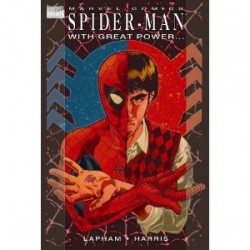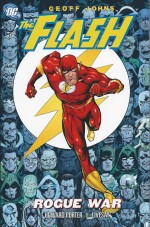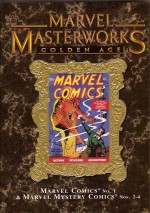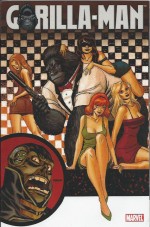
By Jack Cole (DC Comics)
ISBN: 1-56389-847-0
As recounted by Playboy‘s Cartoon Editor Michelle Urry in her Foreword to this third beguiling Deluxe Archive collection, Jack Cole was one of the most uniquely gifted talents of America’s Golden Age of Comics.
Before moving into the magazine and gag markets he originated landmark tales in horror, true crime, war, adventure and especially superhero comicbooks, and his incredible humour-hero Plastic Man remains an unsurpassed benchmark of screwball costumed hi-jinks: frequently copied but never equalled.
In 1954 Cole quit comics for mature cartooning, becoming a household name when his brilliant watercolour gags and stunningly saucy pictures began running in Playboy from the fifth edition. Cole eventually moved into the lofty realms of newspaper strips and, in May 1958, achieved his life-long ambition by launching a syndicated newspaper strip, the domestic comedy Betsy and Me.
On August 13th 1958, at the moment of his greatest success he took his own life. The reasons remain unknown.
Without doubt – and despite other triumphal comicbook innovations such as Silver Streak, Daredevil, The Claw, Death Patrol, Midnight, Quicksilver, The Barker, The Comet and a uniquely twisted take on the crime and horror genres – Cole’s greatest creation and contribution was the zany Malleable Marvel who quickly grew from a minor back-up character into one of the most memorable and popular heroes of the era. “Plas†was the wondrously perfect fantastic embodiment of the sheer energy, verve and creativity of an era when anything went and comics-makers were prepared to try out every outlandish idea…
Eel O’Brian was a brilliant career criminal wounded during a factory robbery, soaked by a vat of spilled acid and callously abandoned by his thieving buddies. Left for dead, he was saved by a monk who nursed him back to health and proved to the hardened thug that the world was not just filled with brutes and vicious chisellers after a fast buck.
His entire outlook altered and now blessed with incredible malleability, Eel resolved to put his new powers to use: cleaning up the scum he used to run with.
Creating a costumed alter ego he began a stormy association with the New York City cops before being recruited as a most special agent of the FBI…
He soon picked up the most unforgettable comedy sidekick in comics history. Woozy Winks was a dopey indolent slob and utterly amoral pickpocket who accidentally saved a wizard’s life and was gifted in return with a gift of invulnerability: all the forces of nature would henceforth protect him from injury or death – if said forces felt like it.
After failing to halt the unlikely superman’s impossible crime spree, Plas appealed to his sentimentality and better nature and, once Woozy tearfully repented, was compelled to keep him around in case he strayed again. The oaf was slavishly loyal but perpetually sliding back into his old habits…
Equal parts Artful Dodger and Mr. Micawber, with the verbal skills and intellect of Lou Costello’s screen persona or the over-filled potato sack he resembled, Winks was the perfect foil for Plastic Man: a lazy, greedy, ethically challenged reprobate with perennially sticky fingers who got all the best lines, possessed an inexplicable charm and had a habit of finding trouble. It was the ideal marriage of inconvenience…
This lavish, full-colour hardback barely contains the exuberant exploits of the premier polymorph from Police Comics #31-39 and Plastic Man #2 stretching from June 1944 to February 1945, and opens with an outrageous examination of current affairs as the chameleonic cop investigated ‘The Mangler’s Slaughter Clinic’ wherein fit and healthy draft-dodgers could go to get brutalised, broken and guaranteed unfit for active duty. The biggest mistake these canny crooks made was kidnapping Woozy and trying their limb-busting procedures on a man(ish) protected by the forces of nature …
Police Comics #32 then detailed ‘The La Cucaracha Caper’ wherein ultra-efficient Plas was forcibly sent on vacation to give the cops and FBI a break and some time to process all the crooks the Ductile Detective had corralled. What no-one expected was that the last gangsters left un-nabbed would also head south of the border to escape their nemesis and Plas and Woozy found far more than Sun, Senoritas and Bullfights in the sleepy Mexican resort…
In #33’s ‘Deathtrap for Plastic Man’ a crazed saboteur stretched our hero’s resources and reason in his mad mission destroy a vital prototype plane for the most implausible of reasons before Plastic Man #2 (August 1944) offered a quartet of brilliant yarns, beginning with ‘The Gay Nineties Nightmare’, wherein Plas and Woozy trailed the worst rats in the underworld to a hidden corner of America where they couldn’t be touched.
No Place, USA, due to clerical errors, had been left off all official maps and withdrawn from the Union in a huff in the 1890s. The FBI couldn’t enforce justice there but maybe two good men – or one and Woozy – could…
Satire was replaced by outrageous slapstick as mild-mannered Elmer Body became ‘The Man Who Could Switch Bodies’, using his newfound gift to experience all the joys and thrills his dull life had denied him. When Plas realised he couldn’t catch or hold the identity thief, all he could do was offer better candidates for possession…
In hot pursuit of Fargo Freddie the stretchable sleuth accidentally chased the killer into a Mexican volcano. Thinking the case closed the hero headed home but was unaware that a miraculous circumstance had transformed his target into The Lava Man’, whose resultant revenge rampage set the nation ablaze until Plas resorted to brains and not bouncy brawn. The issue closed with tale of urban horror as Plas and Woozy were dispatched to a quiet little town where everybody had been driven crazy – even the medics and FBI agents sent in to investigate ‘Coroner’s Corners’…
Police Comics #34 introduce a well-meaning if screwball campaigner determined to end Plas’ maltreatment of malefactors by organising ‘Serena Sloop’s Society for the Prevention of Cruelty to Criminals’, although the old biddy’s philanthropy took a big hit after she actually met some of the crooks she championed, whilst ‘The Confession of Froggy Fink’ in #35 threatened to tear the entire underworld apart, if Plas got hold of it before the many concerned members of the mastermind’s gang did. Cue frantic chases, and lots of double-dealing back-stabbing violence…
In #36 a gang of brutal thieves hid out in the isolated, idyllic paradise of ‘Dr. Brann’s Health Clinic’ turning the unprofitable resort into a citadel of crime until Plas and Woozy decided to take a rest cure themselves, after which ‘Love Comes to Woozy’ offered the unlikely sight of a sultry seductive siren falling for the wildly unappealing Mr. Winks just as the corpulent crime-crusher and his boss were closing in on a gang stealing widows’ and veterans’ welfare cheques…
The big bosses of criminality had finally had enough by #38, offering ‘One Million Dollars for Plastic Man’s Death’. They also included top criminologist Professor Zwerling on their shopping list but even he was too much for the horde of would-be assassins and even diminutive murder mastermind Rocky Goober soon found his reach far exceeded his grasp…
This classic collection then concludes with a riotous rollercoaster romp as ‘His Lordship Woozy Winks’ is improbably tapped as the lost heir to a fancy British estate. Of course Bladau Castle boasts a murderous ghost and rather more prosaic elements determined to ensure the owlish oaf doesn’t inherit…
Always exciting, breathtakingly original, thrilling, funny, scary and still visually intoxicating over seventy years later, Jack Cole’s Plastic Man is a truly unique creation that has only grown in stature and appeal. This is a magical comics experience fans would be crazy to deny themselves.
© 1944, 1945, 2001 DC Comics. All Rights Reserved.











